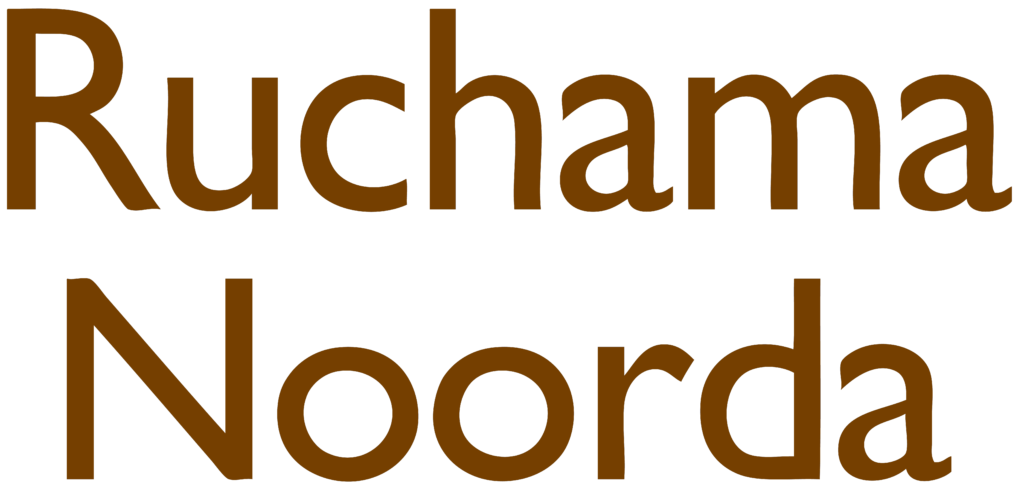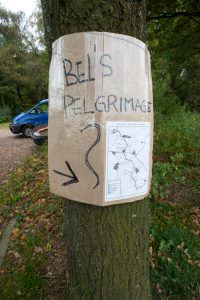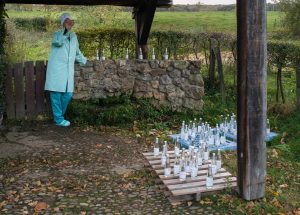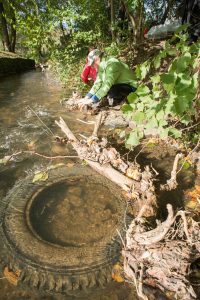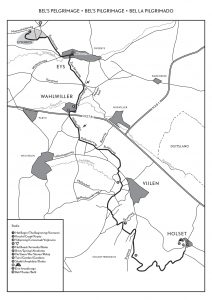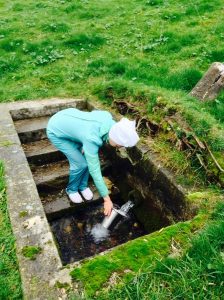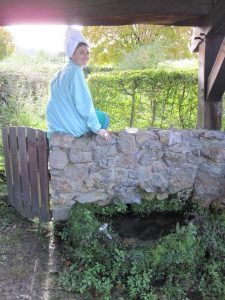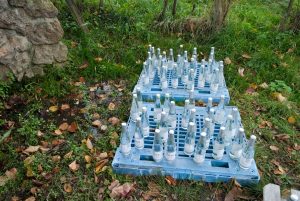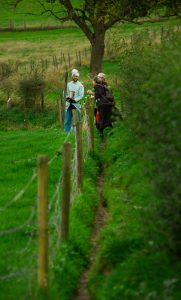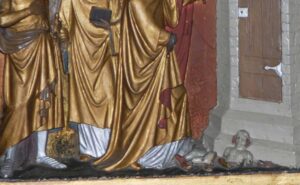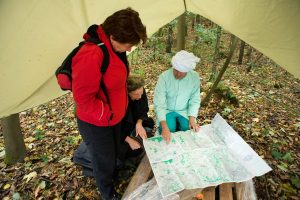BEL’S PILGRIMAGE
An orchestrated 11-km (6.8 m.) walking tour through the rural/post-industrial landscapes of South Limburg, in the southernmost corner of the Netherlands where Holland, Belgium, Germany and the one-time 3.6 sq. km condominium of Neutral Moresnet (1816-1920) butt up against each other. On two successive Sundays in October 2013, members of the public were invited to follow a route laid out on a fold-out map inserted in an annotated guidebook written in Dutch, English and Esperanto (the ‘international language’ at one time promoted in Moresnet).
Loosely modeled on the coils of the kundalini snake and the snake-encircled rod carried by Asclepius, Greek god of medicine and healing, the route wound its way through the woods and fields of this historically Catholic region past herds of cattle, ponds and streams along paths lined with crucifixes, abandoned mines, cemeteries, slag heaps and a Lourdes-like stone grotto built in the late C19th dedicated to Our Lady lined with belemnites – the fossilized shells of mollusks from the Cretaceous era, 145-66 million years ago.

Guides dressed as health spa workers were stationed at intervals along the route to lead walkers to natural water sources. Boxes of prepackaged “Life Earth” (Medicinal Clay) made from local loess containing almost all the minerals essential for human health were available for sampling at the spa waystations.
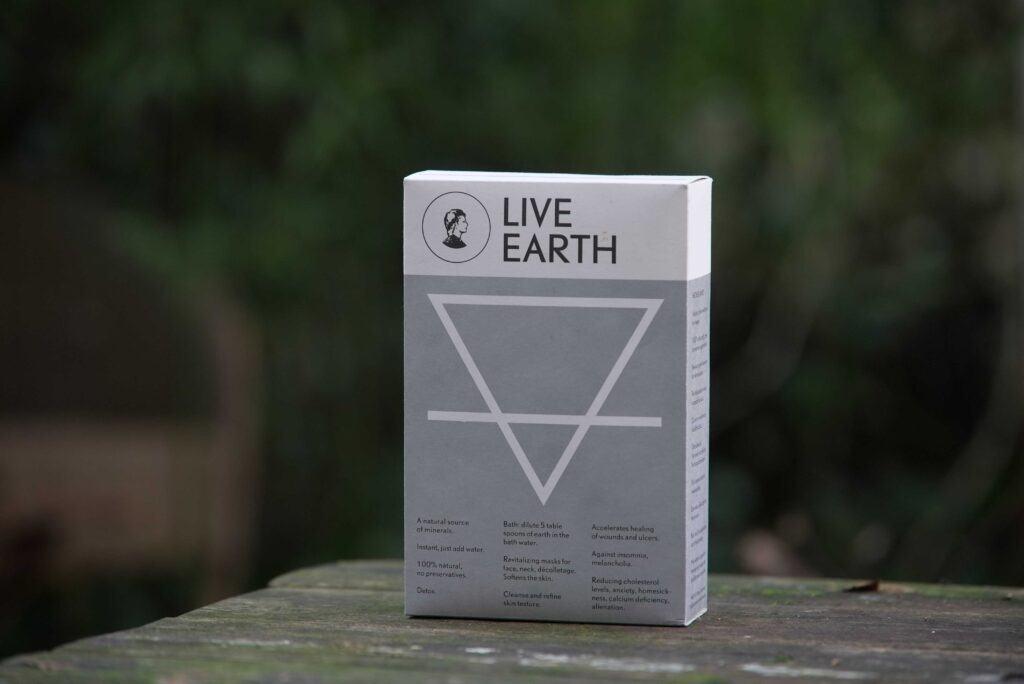
A grotto and birthing-pool made from recycled/ compacted garbage was erected at the point where several roads intersect to form what appears on the map as a 6-pointed star. Viewed from a distance, the grotto-shrine standing in a muddy field adjacent to the intersection, glittered like a mirage in the intermittent sunshine. A hole dug in the earth directly in front of the structure held a puddle of dirty baptismal water.
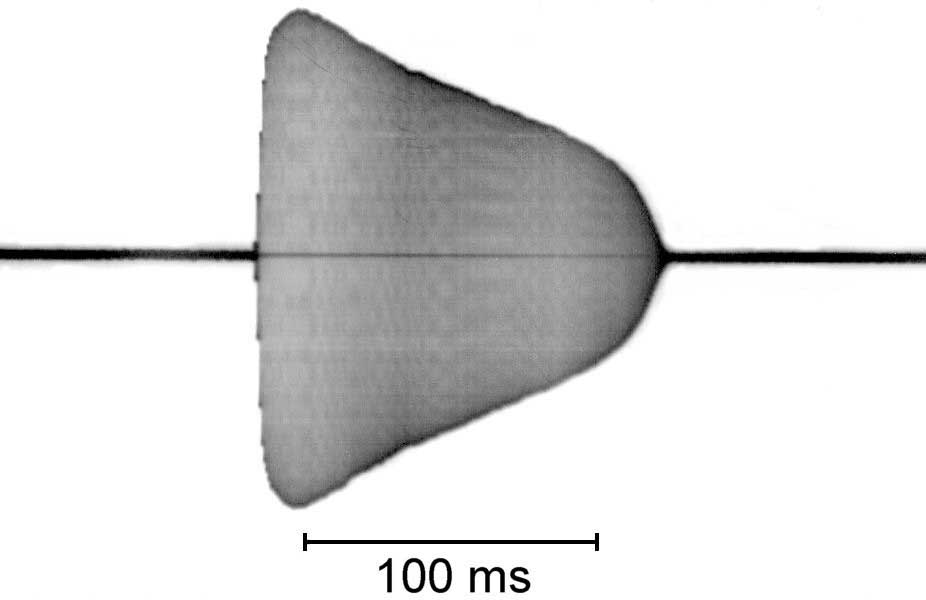
The region’s tangled history is embodied by one example each of totemic local flora/fauna: ‘het zinkviooltje’ (the zinc violet) – a pretty little yellow flower, and the vroedmeesterpad (the Common Midwife Toad) with poison warts arrayed across its back. The zinc violet thrives in South Limburg’s contaminated soil, polluted by toxic pesticides and heavy metals, the tailings of centuries of lead, zinc, coal and copper mining. The amphibian population of frogs and toads is, however, here as elsewhere in serious decline. The tinkling bell call of the Midwife Toad- the klückjse (‘little bell’) in local dialect -still sounds at night in the summer mating season, though it’s now decidedly less common. The violet and the toad stand at opposite ends of the +/- circuit traced out beneath the feet of Bel’s pilgrims-for-a-day. The zinc violet, symbol of resilience incarnate converting poisons into nutrients; the midwife toad – the canary in South Limburg’s decommissioned coal mine – carrying the future generation in wreathes of spawn upon its poison-dotted back.
The pilgrimage dedicated to the pagan God Bel (Belenus)– the big-eared Celtic god whose overthrow, accomplished, according to local legend, by Bishop Lambertus of Maastricht in 692 AD is memorialized on the altar in the church of Holset ended at the nearby well, source of St Genoveva “holy water” available for purchase in plastic bottles inside the church (honour system donations).

BEL’S PILGRIMAGE, Life in the Woods: Marres Projects in collaboration with Bureau Europe and the province of Limburg, curated by Nils van Beek from (TAAK), South Limburg, The Netherlands, October 20 and 27, 2013.
https://www.taak.me/activity/the-bell-and-candle-pilgrimage-route-van-ruchama-noorda/
